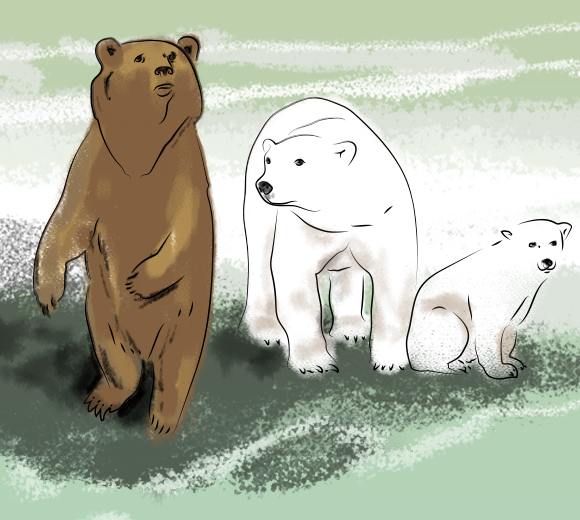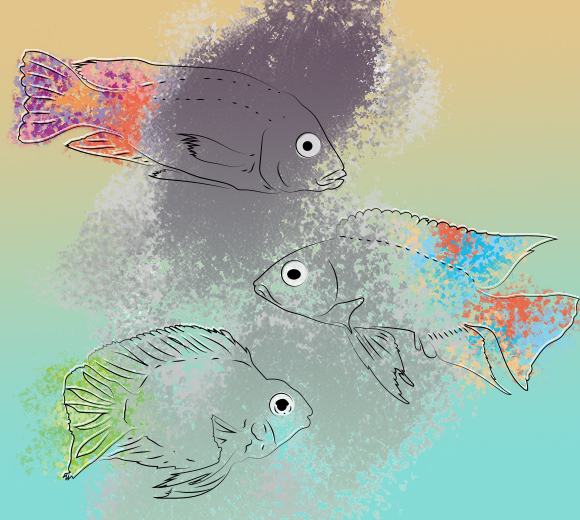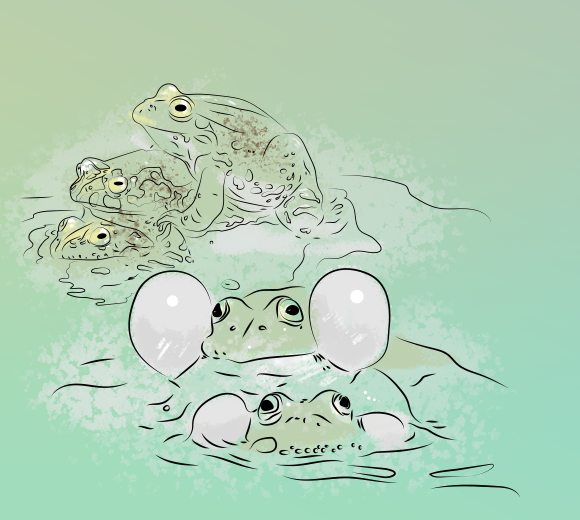
Animal life is getting messy
Globalization is not just for humans: animal species that have lived in isolation from each other are increasingly starting to mate and new hybrids are emerging. What are the implications for biodiversity?
A pizzly bear is a cross between a polar bear and a grizzly bear. A narluga is a cross between a beluga and a narwhal. A coywolf is a cross between a coyote and a wolf.
When two different animal species mate and produce offspring, the offspring is called a hybrid. Zoologists find more and more of them.
Sometimes hybrids turn out to be viable and become the ancestors of whole new species, but often the hybrids have genetic defects and are born deformed or they cannot reproduce themselves and get extinct.
Nazi crossing of bison species
An example of intended hybridization is the nazi’s attempt to save the European bison in the 1930s:
After World War One, only 54 individuals of this species remained, all kept in European zoos. In at attempt to revive the population, German zoologist Lutz Heck, with support from his hunting friend Herman Göring, began to mate some of the remaining European bisons with American bisons.
After the war, these hybrids were destroyed, and today, the European bisons are purebred.
”Sometimes it is driven by evolution and leads to new, strong species. Other times, different species start mating with each other because they are under pressure
While the bison hybrids are planned and human-controlled (like the liger (lion and tiger), the cama (camel and llama) and the beefalo (American bison and cow)), hybrids also occur in nature (as with homo sapiens and homo neanderthalensis.)
- Sometimes it is driven by evolution and leads to new, strong species. Other times, different species start mating with each other because they are under pressure, said Jakob Christensen-Dalsgaard, a zoologist at the Department of Biology, SDU, and elaborates:
- If, for example, there are not many individuals of a species left, they may find it difficult to find a mate and therefore become less selective.
What is an animal species?
An animal species is often defined as a population of animals that can mate with each other and produce viable and fertile offspring.
All animals that can have viable offspring must therefore belong to the same species. But that's not how nature works, and species is an invention that only exists inside the human head, as zoologist Jakob Christensen-Dalsgaard says.
Can genetics be used to determine an animal species? No, because there are no rules for how much genetic material must be identical to become a species.
What if two animals share, for example, 20% genetic material? Are they the same species?
There is no answer to that.
Nature's own hybrids can arise when animal populations have to seek new habitats and in their new habitats collide with populations of other species.
The Arctic is a place where living conditions are changing significantly; one example is that ice is melting. Forced by these circumstances, polar bears spend more time om land than on ice, and on land they more often meet and mate with brown bears.

Another animal that has moved due to climate change is the Southern flying squirrel G. volans, which normally lives in southern Canada, but has now moved further north and has met the Northern flying squirrel, G. sabrinus, with which it has mated and produced hybrids.
The hybrids in Lake Victoria
Over the last 15,000 years, more than 500 species of cichlids (small brightly colored fish also known from hobby aquariums) have evolved in the African Lake Victoria, (which is the size of Scotland).
This is due to an early hybridization of two parental lineages, that created a “hybrid swarm” with increased diversity in visual pigments.
A beautiful example of hybridization, Christensen-Dalsgaard calls it. The many different species have since lived side by side in the lake but have not mixed, because each species has evolved specific signals, for example color combinations, enabling a fish to recognize members of its own species and avoid mating with other species.
”All species have some unique traits that we do not yet know, and every time we lose a species, we also lose some knowledge
But as the lake became more and more polluted in the 20th century, the lake water also became murkier and darker – making it more difficult for the different cichlid species to see each other's different color displays, causing them to hybridize.
Over the past two decades, an estimated 200 cichlid species have been lost in Lake Victoria, in part due to this later hybridization.

Cryptic species
Biologist Morgane Tidiére, also from SDU, has found hybrids in her fieldwork, too. She is interested in the so-called cryptic species; they are genetically and behaviourly different species but they look so similar that it is almost impossible to tell them apart.
The bat family is notorious for harboring many cryptic species – and the fact that they are nocturnal and hide in caves and attics during the day does not make studying them any easier - so Tidiére and her colleagues went to Madagascar and the Comoros to test new methods for species identification.
They analyzed DNA from 200 bats and confirmed that the caves were inhabited by the almost identical-looking species C. pusillus and C. leucogaster.
But to their surprise, the DNA analyzes also showed that 53 of the tested individuals - more than 25% - were hybrids and the result of a mating between C. pusillus and C. leucogaster.
Losing genetic material
The many hybrid bats are a good example of what Jakob Christensen-Dalsgaard calls "messy nature".
- Nature doesn't always fit into the boxes we try to put it in. In fact, there are no set rules for anything. That's what makes biology so amazing, he said.
Just as hybridization can produce new species, existing species can also become more vulnerable as a result of hybridization, he explains:
If animals from different species mate and create hybrids, the hybrids can outcompete the parent species. If the parent species disappear, their unique features will be lost with them. Or the hybrids will mate with the parent species, resulting in what scientists call swamping of their genetic material.
In both cases, genetic material can be lost, as in the example of the Lake Victoria cichlids.
Denmark's hybrid frogs

- The edible frog (Rana esculenta), which lives in Denmark, is a hybrid of two parent species; the marsh frog (Pelophylax ridibundus), which is found on Bornholm (but not in the rest of Denmark) and the pool frog (Pelophylax lessonae), which is not found in Denmark.
- South of Denmark, the marshfrog and the pool frog mate, and the result is edible frogs.
- In Denmark, the edible frogs mate with each other or the few marsh frogs found on Bornholm.
As animal habitats disappear or are reduced, it is plausible that we will see increased hybridization and thus an increased risk of a species' genetic material being swamped, so that the species loses some of its characteristics.
- All species have some unique traits that we do not yet know, and every time we lose a species, we also lose some knowledge, said Jakob Christensen-Dalsgaard, adding:
- The fact that we no longer have animals like the dodo and Steller's sea cow can almost make me cry. They had some unique traits that we will never know.
Loss of habitat is the biggest problem
Jakob Christensen-Dalsgaard does not see hybridization in itself as a major problem. It has always happened, he points out, - and probably to a greater extent than we think - so the phenomenon itself is not new.
- The biggest problem is that the animals' habitats disappear or are fragmented, so that they do not have the space they need.
It's not just mammals that hybridize: the scientific literature also reports on Cuban/American crocodiles, Russian sturgeon/American paddlefish, timber rattlesnake/western diamondback rattlesnake, cutthroat trout/rainbow trout, ants, bees, wasps and termites.
Meet the researcher
Jakob Christensen-Dalsgaard is associate professor at the Department of Biology. He is particularly interested in the behavior and hearing of reptiles and amphibians.